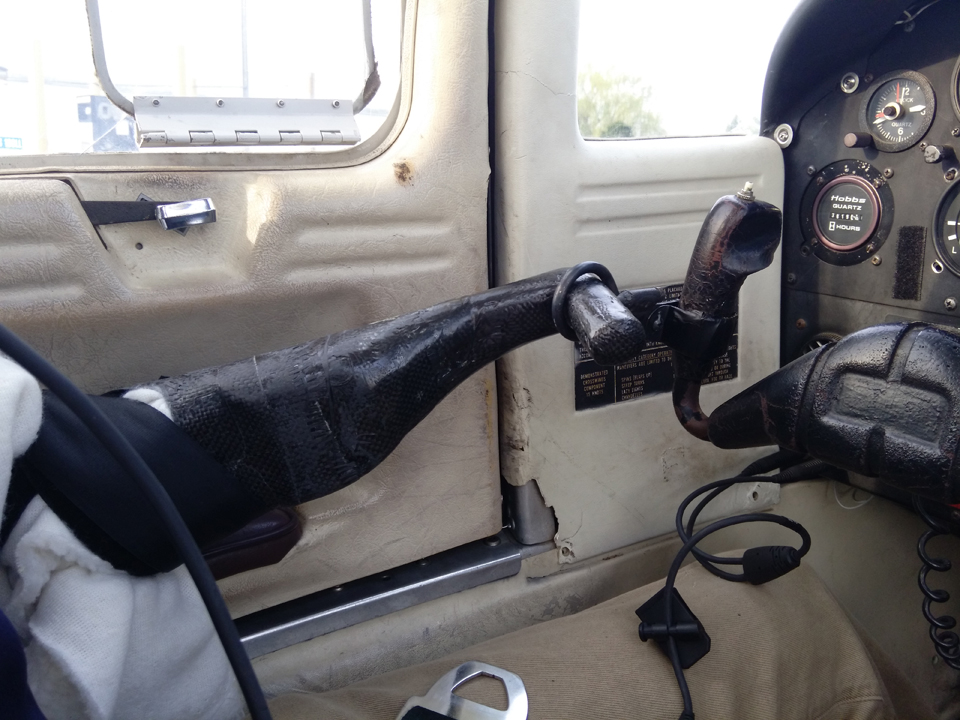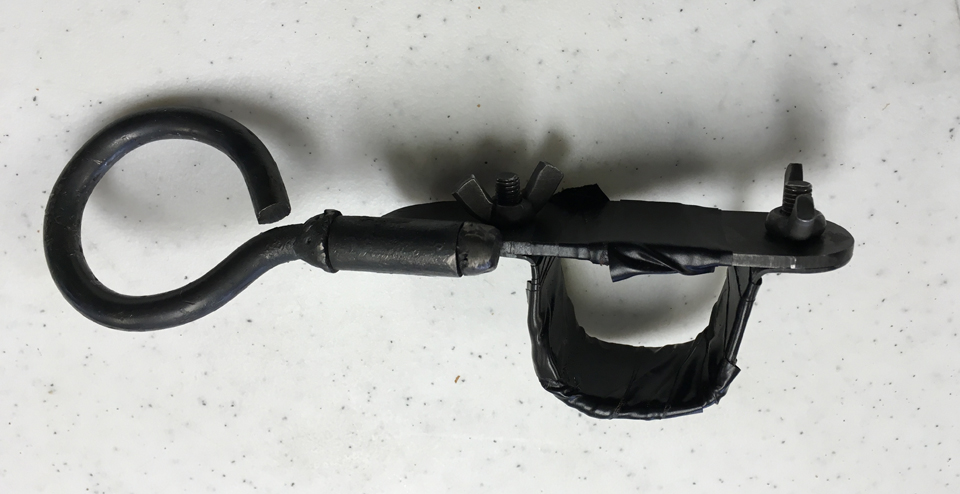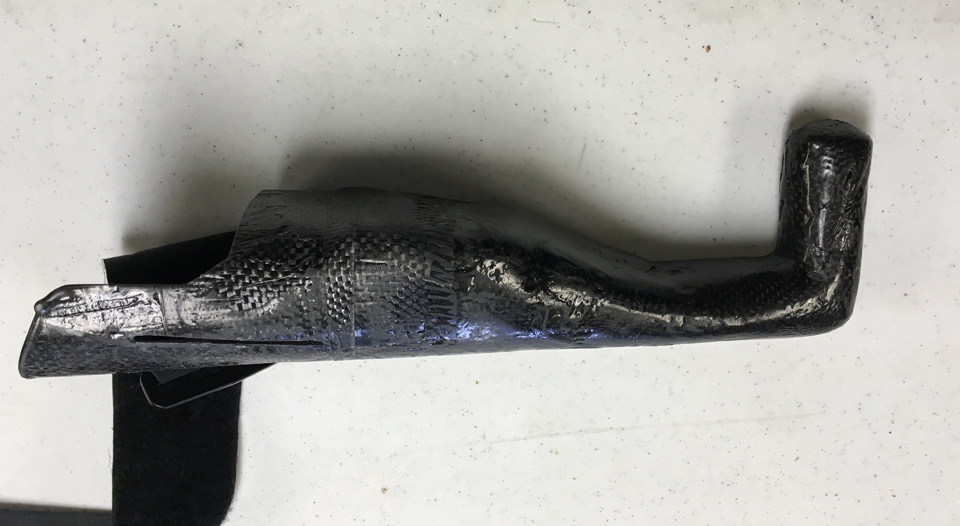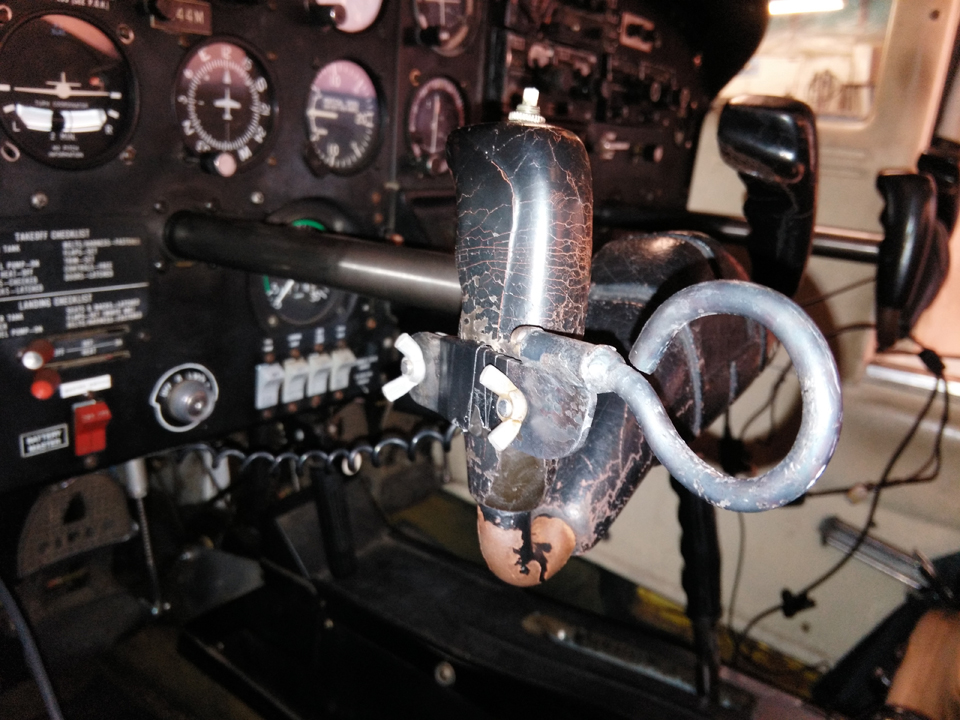Prosthetic Flying
By Isaac Faibisoff, EAA 1049329
June 16, 2016 - I give flight instruction at a little airport near my home. Late last year the owner of the FBO where I instruct called me up and said he had a new student for me. My student to be, Chad, had lost his left forearm in a motorcycle accident years ago but had learned to live without a left hand so well that he never had a prosthetic made. Since I am also a neurologist, the FBO owner thought that I would be able to figure out a way to get Chad flying. Well, I had never dealt with anything like this before and certainly had never made a prosthetic device, but I love a challenge so started thinking about the problem at hand and came up with several ideas. I then called Chad and invited him over to my house, where I have my workroom, and we spent an evening measuring his arm and examining what movement he had. Then I went back to thinking about a solution.
Chad had lost the bottom half of his left forearm. After some miraculous plastic and nerve repositioning surgery he recovered movement beyond the elbow so that about six inches of forearm was usable. He now has movement of the shoulder and can move his elbow up and down. He has no twisting movement other than at the shoulder and is much stronger in flexing the elbow than in extending it.
What I came up with was this: first, a simple lightweight prosthetic that would strap on to his forearm and would have a sort of hook at the end. Second, an interface that would attach to the control yoke and have an eye hook in it that would receive the hook on the prosthetic end. Chad would be able to control the ailerons by flexing or extending his elbow and control the elevators by moving his upper arm at the shoulder fore and aft.
I made the prosthetic out of carbon fiber scraps I had in my workshop. I carved foam into the desired shape, applied the carbon fiber/epoxy to the outside of the form, and removed the foam once cured. This was sanded smooth and any sharp edges were removed. This left a socket in one end that could receive his arm. Slits were cut for the strap, which is a length of Velcro that I bought from Home Depot. The strap wraps around his upper arm, securing the prosthetic. The eye was bent from 1/4-inch steel rod. The straight end of the eye was passed through a short length of 1/4 inch bushing stock and secured in place by welding washers to the rod on either end of the bushing, thus allowing the eye to freely turn in the bushing. This bushing was first welded to a length of 0.09-inch-thick 4130 sheet, which became the bracket that clamped the whole interface to the control yoke.
The result is that Chad can control the airplane by using his left arm to operate the elevators and ailerons and his right hand to operate the engine controls, flaps, trim, instruments, and avionics. He underwent a medical flight test given by the local FSDO, received a statement of demonstrated ability, and recently soloed.




